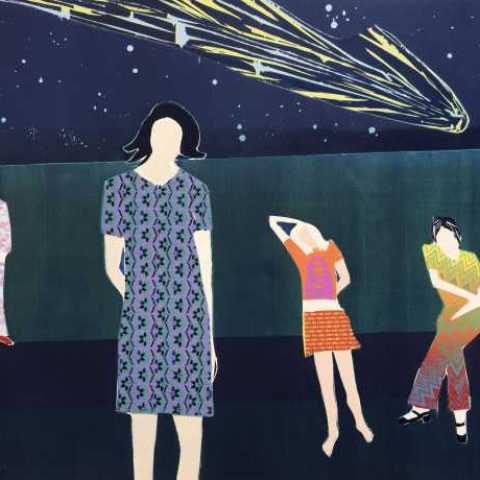Flowers Kingsland Road
82 Kingsland Rd
London
E2 8DP
United Kingdom

British painter and printmaker Tom Hammick has described landscape in his work as a metaphor to explore an “imaginary and mythological dreamscape.” Drawing from a wide range of sources, from Japanese woodblock prints to Northern European Romantic painting, utopian Modernism and contemporary cinema, Hammick’s depictions of isolated human dwellings grounded in uncanny dreamlike settings summon the uneasy atmosphere of a psychologically-charged thriller, or a dystopian suburban nightmare.
In the present exhibition of woodcuts, shown in its entirety for the first time in the UK, Hammick conjures a metaphorical journey to outer space, weaving interstellar dreams and earthly relationships. A suite of seventeen images traces the cyclical path of his protagonist, an archetypal artist or poet, who leaves life on earth in pursuit of freedom and isolation on the moon - only to be haunted by memories of those he has left behind.
The narrative cycle begins with Cloud Island, featuring a solitary family home surrounded by a lush garden under a canopy of ornamental trees. The scene, symbolising a prelapsarian Eden, is watched by the voyager from his boat as he prepares to leave. This initial tranquility is ruptured in Journey to the Moon, when his ship is fired out of the Earth’s atmosphere, with a voluptuous riot of curling forms in golds, reds, pinks and turquoise evoking the sonic roar of rocket engines. In subsequent images, such as Lunography and Star Path, where the capsule is seen to embark on its weightless journey towards a solitary camp on the moon, the infinite midnight blue of outer space suggests complete silence and a new-found alienation and abandonment of the past.
As the journey continues, Hammick’s explorer is plagued by dreamlike visions of events on Earth, prompting questions within the narrative about whether he ever really left home at all. The space station, seen in images such as Chamber, Pitch and Sleeper, appears to be occupied by the mysterious, spectral presence of a female figure and recurring images from both past and future. Woven within this latter sequence of images are references to the feature films of Stanley Kubrick and Andrei Tarkovsky, bringing to mind the striking sets of Kubrick’s The Shining and the romantic resurrection of psychologist Kris Kelvin’s wife Hari in Tarkovsky’s Solaris.
Recalling utopian designs from previous eras, the capsule portrays the nostalgic dreams of space travel found in comic books and the cut-and-paste aesthetic of 1970s poster graphics, while the spherical tent-like space station is reminiscent of mid-twentieth century geodesic domes, designed by R. Buckminster Fuller as models for sustainable living. Hammick’s concern with sustainability and the fragility of the environment is reflected in the shifting viewpoint from the stars, looking back at the fertile earthly landscape from the barren lunar surface. He says: “The key Confucian motif in Carl Sagan’s Pale Blue Dot is that actually there is no place for us to go. The physical escape in the series, leaving earth for the stars, is in fact a selfish and unrealistic act and could be seen as a fantasy. We must dream on Earth, and we need to be aware of our responsibility as custodians of this planet to conjure up ‘Heaven on Earth’.”
